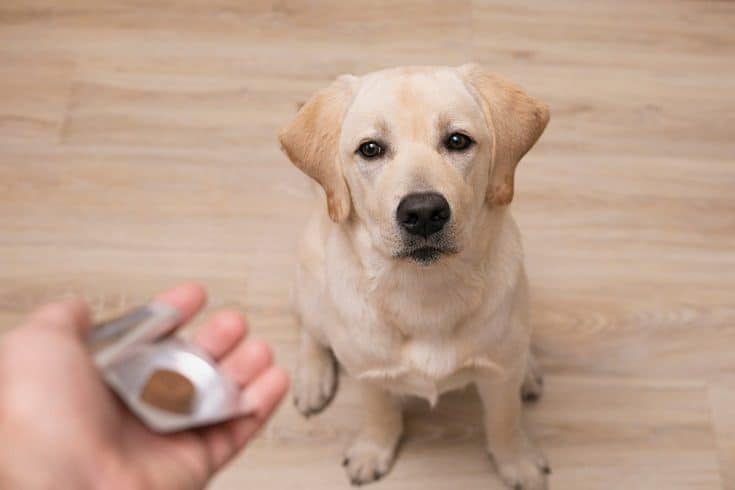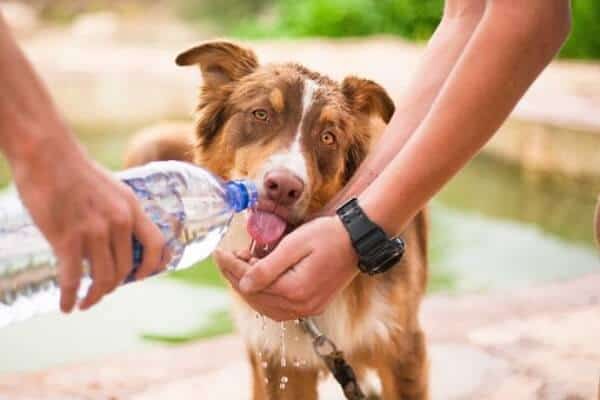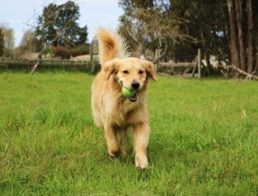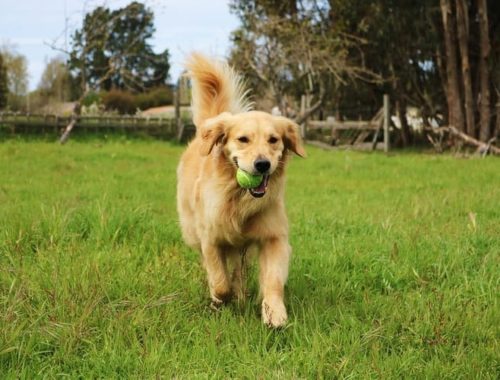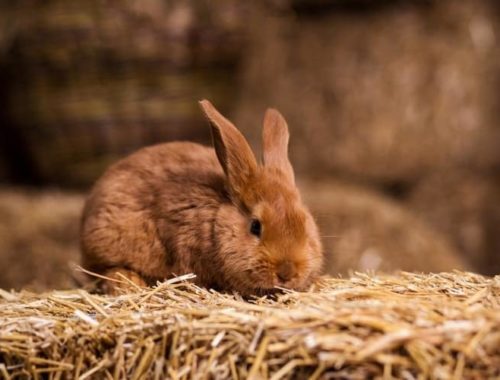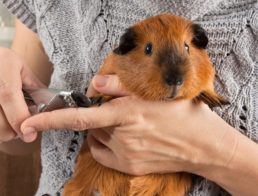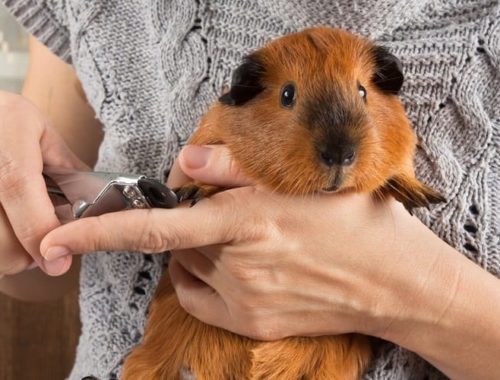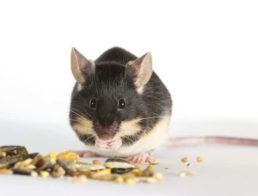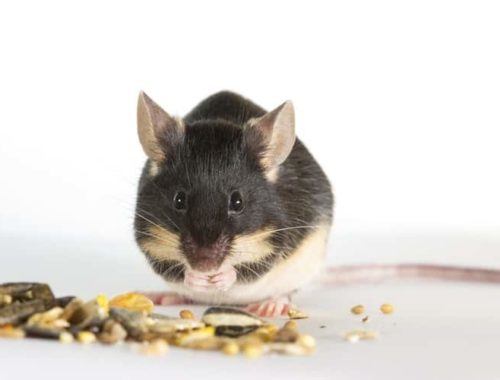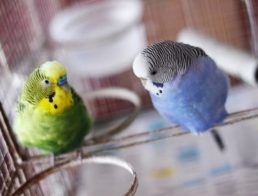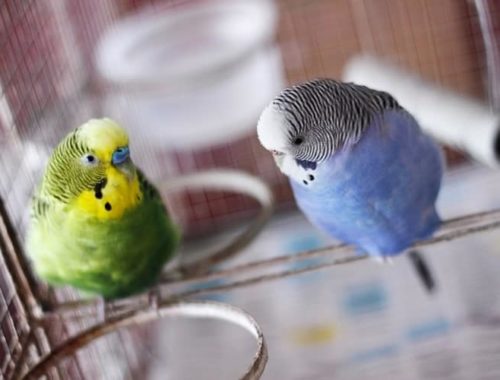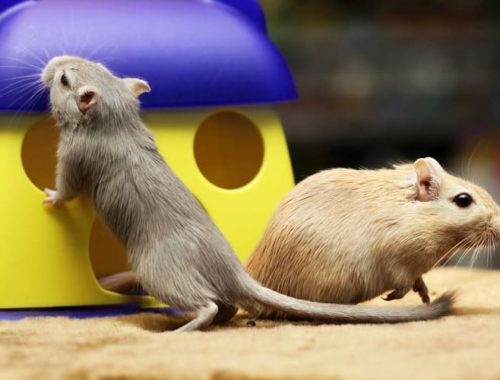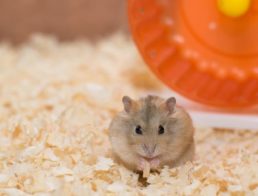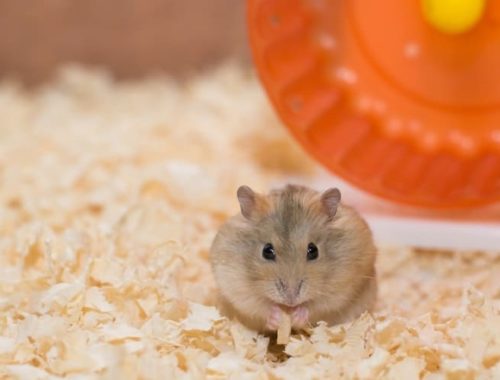Labrador retrievers are popular pets for adults and children alike. They tend to be healthy, gentle, playful, and energetic. Labs, as they are often called, have certain needs that are a bit different than what is required for some other types of dogs. It is important to learn about what you should do to take care of a Labrador retriever before you make the final decision to get one.
How to Set Up for Your Labrador Retriever

- Purchase a crate for your new dog. It should be large enough for your pet to stand up and lay down when he reaches his adult size. Most Labrador retrievers will be approximately 22 to 24 inches at the shoulder, so you will need a crate that is at least 32 inches tall to accommodate his head. The crate should include a tray underneath. You can line the crate with a blanket or two to make it soft for him.
- Buy some type of bed for your Labrador retriever. There are many types of dog beds available, including mattress-style beds, beds that fit in the crate, elevated beds, and beds made out of memory foam. You can check out this list of the 25 best dog beds for large dogs.
- Purchase a collar for your dog. There are several types of collars that you might consider. A traditional buckle collar is good for keeping your dog’s tags in place, but many labs are able to back up out of them. A choke collar can be useful in training but should not be left on your dog when he is unattended. A Martingale collar is a nice hybrid; the collar cannot tighten unless the dog is pulling against a leash or you are snapping it to correct him. The use of prong collars is generally not recommended unless you are working with an experienced trainer.
- Buy a leash. Most Labradors should be on a 6-foot leash when out walking. You can choose one made out of nylon, rope, or chain. A leather or nylon handle will be most comfortable for you.
- Ensure he cannot escape out of the yard. If your yard is not fenced, you will need to decide how you will keep him from running away. You might choose to keep him on a leash all the time. Another option is to use an electronic fence, but be aware that not all labs will respect that boundary. A tether is a good option when you are watching him, but dogs should not be left on a tether unattended, since they can get stuck and even strangle themselves. An outdoor kennel is another possibility. Keep in mind that your dog is a pack animal, however, and should not be kept outdoors most of the time.
- Buy a food bowl and a water dish. Choose ones that are not likely to tip over. You might also want some type of mat or rug under the dishes to minimize messes on the floor.
How to Feed Your Labrador Retriever
- Feed your dog twice per day if she is over 6 months old. If she is a younger puppy, you should feed her three or four times per day. If you are home during the day, you could continue to feed her three times per day as an older puppy and even an adult, but for convenience, twice per day is fine. Read the box or bag to find out how much food is recommended for your dog’s weight and split up that amount into two, three, or four meals. If she seems hungry after eating, you can give her a little more, and if she can’t eat it all, give her a bit less next time.
- Choose a high-quality commercial food. It is up to you whether you choose to feed your dog wet or dry food. You can choose a grain-free food if you prefer. The best way to choose a food is to talk to your veterinarian about what he or she recommends.
- Switch to a new food gradually. Find out what your lab was eating at her former home and begin with that. Even if the food is not particularly high quality, it is important that you don’t switch her too quickly, as that will result in stomach upset, diarrhea, and vomiting. Begin transitioning her by feeding her a combination of 3/4 of the old food and 1/4 of the new food. After a week, switch to 1/2 of the old food and 1/2 of the new food. In the third week, give her 1/4 of the old food and 3/4 of the new food. At that point, you will be ready to give her only the new food.
- Add in “extras” for picky eaters. Some Labrador retrievers can be picky and will not eat dry food. You can mix in a spoonful of canned food, plain yogurt, or low-salt cottage cheese to make the food more interesting. You can also sprinkle on a few pieces of shredded cheese or a tablespoon or two of canned pumpkin (not pumpkin pie filling, just plain pumpkin). Be sure that whatever you are stirring does not contain a lot of salt or any sugar.
- Give your dog treats sparingly. You can give your dog biscuits or treats at times. These should not take the place of meals, though, so use a light hand. Many people like to use treats for training. In addition to commercial treats, you can give your dog small pieces of plain chicken breast, cheese, cooked carrots or sweet potatoes, or part of a hard-boiled egg. Don’t give her table foods, because they could contain onion, garlic, or other ingredients that are toxic to your dog. Also, avoid anything with sugar or a lot of salt.
- Be sure your lab has fresh water available at all times. Wash out her bowls each day and change the water if it gets dirty in between washing.
How to Wash Your Labrador Retriever
- Spot clean your Labrador retriever regularly. Use dog wipes or a damp cloth to wash his face and any areas of his fur that look dirty. Do not use baby wipes because they contain chemicals that could be toxic to your dog if he licks it off of his fur.
- Bathe your dog occasionally. A Labrador has a thick, water-resistant outer fur and does not need frequent baths. Even though your pet will love swimming and splashing in water, the shampoo used during a bath can remove natural oils and trap moisture in his undercoat, which should usually remain dry. Don’t bathe him more than once per month, and once per quarter or even every six months is adequate if he isn’t dirty.
- Wet down your dog with lukewarm to warm water. During the summer, you can use the garden hose if it is hot out. During the winter, you will need to use your bathtub.
- Use only dog shampoo. Do not use shampoo made for humans, as this will be harmful to your dog’s coat and skin. Rub the shampoo into his fur. Do not use shampoo on his ears or face.
- Rinse well. Don’t leave any traces of shampoo on your dog’s body, as this will cause itching as it dries.
- Use a wet cloth to wipe your lab’s ears and face.
- Towel-dry your dog. You can use towels to get as much water as you can off of him. Your Labrador retriever will shake his fur to remove more water. If he tolerates it, you can use a hairdryer set on low, but if he doesn’t, just let him stay in a warm place until he is dry.
How to Clean Your Labrador Retriever’s Crate
- Remove the blankets from your lab’s crate two or three time per month. Wash them in the washing machine with laundry detergent. Run an extra rinse cycle to be sure to get all traces of laundry detergent out of the blankets. Hang to dry or dry them in the dryer, but do not use fabric softener.
- Pull out the tray under the crate once per month. Wash it with soapy water in the bathtub or outdoors. Be sure to rinse it well and dry it completely.
- Pull the crate away from the wall. Since your Labrador retriever will shed frequently, pull the crate away from the wall and sweep or vacuum behind it. If it is on a hard floor, you can mop at this time, too.
- Put the crate back together and replace the blankets.
How to Handle Your Labrador Retriever
- Pet your lab using firm strokes. Many dogs don’t like to be patted on the head, so use long strokes instead. Pet her in the direction of hair growth.
- Do not hug your lab around the neck. Large dogs tend not to like this. Also, do not put your face in her face. Teach your children not to hug the dog or put their face too close to her face. Instead, allow her to lean on you and put her head on your lap or your chest if she wants to.
- Watch for signs of distress. Dogs will often tolerate behavior from their family members that make them uncomfortable, but if you push them too far, they might snap or even bite. If she is licking her lips, yawning, or avoiding eye contact, take that as a sign that she is uncomfortable and back up. Teach your children how to recognize these signs and do not allow them to continue what they are doing if you or they see these signals.
- Learn how to correct your Labrador retriever. Labs are usually eager to please and want to do what makes you happy. You should not yell at or physically discipline your dog at all. A trainer or a good training book can teach you how to gently correct her using her leash and collar as well as your voice. Clicker training uses a clicker to reinforce positive behavior.
- Be careful around your dog’s food. If you got your lab as a puppy, you can train her to allow you to touch her food, but an adult dog might already be food-protective. This means that she might growl or snap if you reach for her food while she is eating. While you can train her not to do this, never allow your children to reach for food while any dog is eating, including your own family pet.
How to Know If Your Labrador Retriever Is Happy and Healthy
- Read a book about caring for dogs. Look for one that is about caring for Labrador retrievers in particular, if possible. This will teach you how to keep your new pet healthy.
- Take him to the veterinarian regularly. Puppies need to see the vet every few months for vaccinations, and adults need to see the vet once per year. Not every vaccine necessarily needs to be given each year, but your vet will weigh your dog, check him for signs of illness, and monitor her physical and mental health.
- Monitor his eating, drinking, and elimination. Your lab should be eating well, drinking water, and eliminating regularly. Check his stools to be sure they are firm. If he has diarrhea, check in with your veterinarian.
- Check his behavior. You will get to know how your Labrador retriever usually acts. If he seems listless, restless, or aggressive, take him to the veterinarian.
Your Labrador retriever will likely live between 10 and 12 years. Taking good care of him will bring both of you a decade or more of fun, and he will be a loyal friend to you and your other family members.
Featured Image Credit: Olya-Maximenko, Shutterstock


